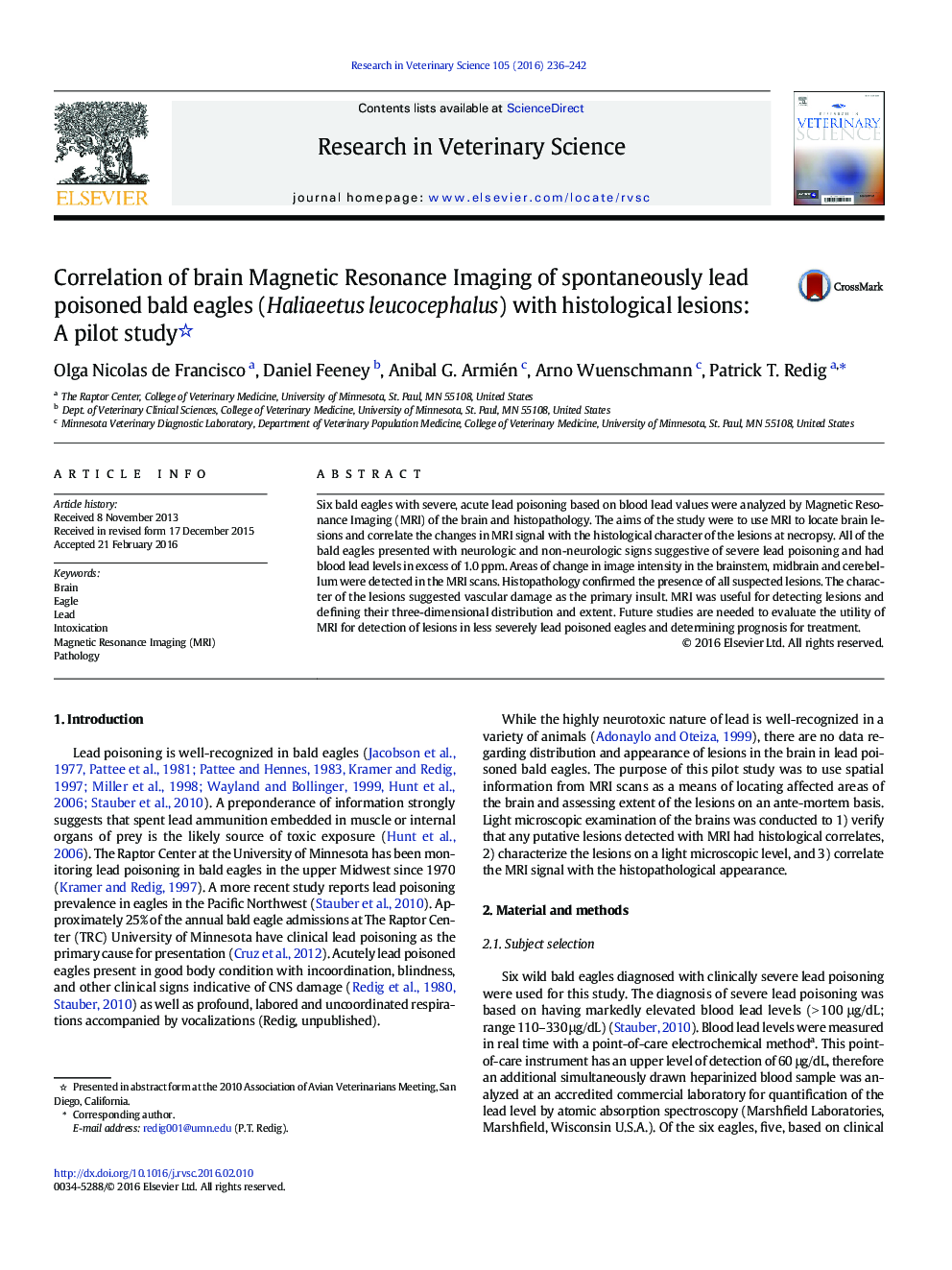| Article ID | Journal | Published Year | Pages | File Type |
|---|---|---|---|---|
| 5794393 | Research in Veterinary Science | 2016 | 7 Pages |
â¢MRI is capable of detecting areas of altered intensity in brains of bald eagles antemortem.â¢Histological evaluation of MRI-detected lesions suggests that the primary lesion is vascular.â¢MRI lesions ranged from hyper-intense to hypointense as a function of age and duration of lesion and character of hemoglobin breakdown products.
Six bald eagles with severe, acute lead poisoning based on blood lead values were analyzed by Magnetic Resonance Imaging (MRI) of the brain and histopathology. The aims of the study were to use MRI to locate brain lesions and correlate the changes in MRI signal with the histological character of the lesions at necropsy. All of the bald eagles presented with neurologic and non-neurologic signs suggestive of severe lead poisoning and had blood lead levels in excess of 1.0Â ppm. Areas of change in image intensity in the brainstem, midbrain and cerebellum were detected in the MRI scans. Histopathology confirmed the presence of all suspected lesions. The character of the lesions suggested vascular damage as the primary insult. MRI was useful for detecting lesions and defining their three-dimensional distribution and extent. Future studies are needed to evaluate the utility of MRI for detection of lesions in less severely lead poisoned eagles and determining prognosis for treatment.
